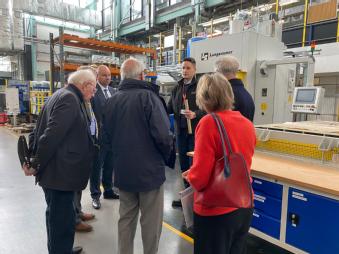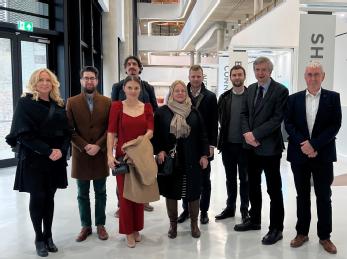WMG News - Latest news from WMG
Battery safety project scoops top industry award
 The SafeBatt project, involving battery experts from WMG at the University of Warwick, has won a Safety Innovation Award at the Electrical Product SafetyLink opens in a new window Conference.
The SafeBatt project, involving battery experts from WMG at the University of Warwick, has won a Safety Innovation Award at the Electrical Product SafetyLink opens in a new window Conference.
The conference was held in London on Thursday (21st November) with the awards recognising and celebrating the best engineering collaborations and innovations across the UK.
Funded by the Faraday Institution, SafeBatt is a collaboration of seven universities as well as industry partners investigating the science behind battery safety.
Millions awarded to University of Warwick to turbocharge UK’s battery production
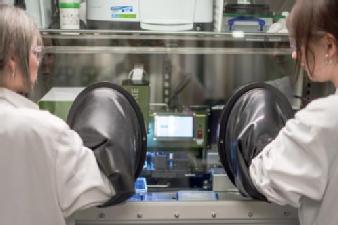 The University of Warwick has been awarded millions of pounds to boost British production of crucial materials for electric car batteries.
The University of Warwick has been awarded millions of pounds to boost British production of crucial materials for electric car batteries.
The £12 million in funding has been awarded by the Faraday Battery Challenge to the High Value Manufacturing Catapult at WMG at the University of Warwick, and CPI at NETPark (North East Technology Park), in County Durham.
It will be used to create the new Advanced Materials Battery Industrialisation Centre (AMBIC).
The Centre will bridge the gap between academic research and battery production and will focus on how batteries can be made to work more efficiently, as well as on equipment and skills development.
The Centre is needed to help the UK develop the electric vehicle batteries of the future, with reduced costs, more sustainable materials and improved performance.
Electric vehicle batteries make up around half the cost of a new electric vehicle, so reducing the cost of their production is crucial to lowering the cost of EVs to parity with combustion engine vehicles.
The funds are part of a wider investment strategy by the Faraday Battery Challenge and the High Value Manufacturing Catapult to ramp up Britain’s battery production and infrastructure to boost the UK’s domestic battery supply chain.
Professor David Greenwood, CEO of the WMG High Value Manufacturing Catapult Centre said: “Cathode and anode active materials make up more than 50% of the value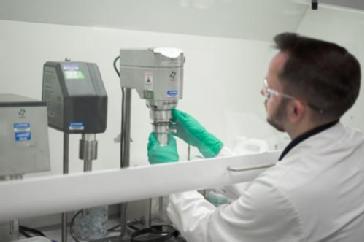 of an automotive battery cell.
of an automotive battery cell.
“For the UK to take its great academic research into production, and to capture the billions of pounds of resulting economic value in the UK, we need facilities which allow Britain to scale up and fully evaluate new materials. This investment, alongside the combined skillsets of CPI and WMG will provide that capability for the UK.”
The funds are specifically to help turbocharge the scale up of battery materials manufacturing within the UK. Only by producing batteries on a wider scale domestically can the EV industry make sure there is no bottleneck in supply and demand. By strengthening UK supply chains of battery materials, WMG is working with UKBIC and others to create a more resilient supply chain.
Thomas Bartlett, Challenge Deputy Director for the Faraday Battery Challenge, said: “AMBIC will bring together two emerging regions of battery innovation and manufacturing; the North-East and Midlands, under one facility to de-risk and accelerate battery materials scale up in the UK.
“Through the Faraday Battery Challenge’s £12m investment in the High Value Manufacturing Catapult we will establish a truly world-class facility to support the growth of a battery materials supply chain. With AMBIC and previous investments in cell, module and pack scale-up at UKBIC and R&D in the wider ecosystem, the UK will now be in a position to support businesses from “powder to pack” and from lab to commercial scales.”
Katherine Bennett, CEO of the High Value Manufacturing Catapult, said: “The next generation of battery technologies are critical to the green energy transition and a major opportunity for UK manufacturing. Realising that potential will require combining our collective expertise and this investment from the Faraday Battery Challenge is a brilliant example of that in action.
“In CPI and WMG, the Advanced Materials Battery Industrialisation Centre has two centres that are at the very forefront of chemical processing and battery cell development; together they can turbo charge battery materials scale-up.”
Frank Millar, Chief Executive Officer at CPI, said: “The Advanced Materials Batteries Industrialisation Centre will enhance the UK’s existing competitive advantages in batteries technology, and it stands to become a catalyst for the UK to address some of the biggest challenges we face as a nation. By giving innovators the opportunity to harness our expertise we can tackle issues such as climate change, while growing a sector that will be vital to the future of the economy.”
Members of the Worshipful Company of Engineers visit WMG
WMG, University of Warwick welcomed members of the Worshipful Company of Engineers to the department to discuss the importance of industry working with academia on research and education. The Company comprises leading engineers, and works to promote and develop all aspects of the science, art and practice of engineering.
Professor Mark Williams, Head of Metrology and Visualisation gave a tour of WMG facilities which focused on the important role of CT scanning in battery technology, criminal forensics, and medicine.
Current winner of the Leete Premium Award, Will Naylor presented his PHD work to the group. Will’s research which has been recognised due to its potential to introduce significant change in manufacturing, investigates methods of capturing, transmitting, and delivering high quality, multisensory, 3D data between remote locations.
Professor Paul Jennings ,Director of Research at WMG who led the visit said: “It was a pleasure to welcome members of the Worshipful Company of Engineers to WMG and give them a real insight into our pioneering research and innovation. The importance of collaboration was a key discussion point throughout the day and Will’s work is a true testament to that – his research is helping engineers to seamlessly work together and share ideas around the world.”
Find out more about WMG’s research here: https://warwick.ac.uk/fac/sci/wmg/research/
Members of the Slovakia government visit WMG
Delegates from the Slovakian government visited WMG, University of Warwick for an introduction into the department’s ground-breaking battery R&D and a discussion on the importance of industry and academia collaboration.
A total of eight delegates led by State Secretary, Ministry of Economy, Ján Oravec enjoyed a tour of the Energy Innovation Centre (EIC) by Chief Engineer, Mark Amor-Segan who demonstrated EIC’s facilities to research, develop and test the latest technologies at the forefront of energy storage.
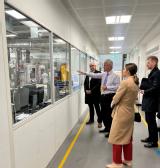
Professor Paul Jennings, Director of Research at WMG, University of Warwick who hosted the visit said: “It was great to be able to meet the delegation and showcase the power of academia and industry working together, demonstrating how we are helping to drive the sector forward through impactful research and new education and skills offerings.”
Find out more about WMG’s energy research here: https://warwick.ac.uk/fac/sci/wmg/research/energy/
WMG launches EV battery recycling facility
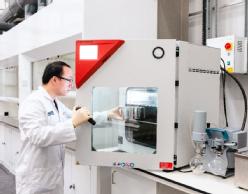 WMG, at the University of Warwick, has revealed its new EV battery recycling scale-up facility, the first of its kind in the UK.
WMG, at the University of Warwick, has revealed its new EV battery recycling scale-up facility, the first of its kind in the UK.
The adoption of electric vehicles has created a huge demand for battery metals such as lithium, nickel and cobalt; and this will accelerate each year as electric vehicles replace conventional vehicles. UK-based OEMs pay hundreds to recycle end-of-life lithium-ion batteries that are then exported abroad for material recovery, with the material later repurchased. Recycling of batteries in the UK will provide a stable and sustainable supply of indigenously sourced metals that will be vital for the UK’s automotive needs.
Anwar Sattar, Lead Engineer at WMG, explains: ‘‘The UK has some of the best research organisations in the world, and this facility will now enable us,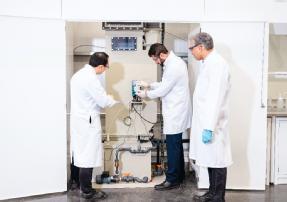 like our international peers, to take our innovations to the EV market direct.
like our international peers, to take our innovations to the EV market direct.
“We can now carry out kilogramme scale research which will allow us to attain data that is much more valuable to the UK industry, allowing them to make informed decisions about issues such as material handling and separation, scalability, product quality and waste production.’’
Professor David Greenwood, CEO of the WMG Centre HVM Catapult and Director of Industrial Engagement adds: “Batteries are a key enabler to the use of zero carbon energy, and they are a great industrial opportunity for the UK. Making them uses significant quantities of valuable materials, so it is essential that they are safely collected and recycled at the end of their useful life – providing the material feedstock for future generations of batteries. Today’s processes recover as little as 50% of the mass of the battery, and require large quantities of energy and chemicals as inputs. This new facility at WMG will allow us to research new recovery techniques which are more effective, cleaner and cheaper to operate.”
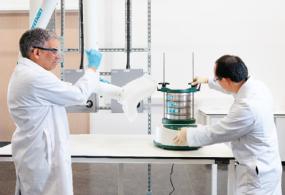 The new recycling facility, funded by the High Value Manufacturing Catapult, is situated within the Advanced Materials Manufacturing Centre. It is equipped with state-of-the-art equipment such as a wet alkaline scrubber which will enable researchers to safely carry out experiments that are not possible elsewhere. It is designed to accommodate pilot scale recycling machinery including dryers, furnaces, separators, and various reactors for the chemical recovery of metals. The facility will also host a scaled-up version of WMG’s novel lithium recovery process which will be able to recover over 90% of the lithium in a battery at very high purities.
The new recycling facility, funded by the High Value Manufacturing Catapult, is situated within the Advanced Materials Manufacturing Centre. It is equipped with state-of-the-art equipment such as a wet alkaline scrubber which will enable researchers to safely carry out experiments that are not possible elsewhere. It is designed to accommodate pilot scale recycling machinery including dryers, furnaces, separators, and various reactors for the chemical recovery of metals. The facility will also host a scaled-up version of WMG’s novel lithium recovery process which will be able to recover over 90% of the lithium in a battery at very high purities.
Various projects are already underway at the facility including an £8.9m project ‘Recycling of EV Cells from Obsolete Vehicles at Scale’ (RECOVAS). Supported by the Advanced Propulsion Centre, the project will create a circular supply chain for electric vehicle batteries in the UK.
Find out more about WMG’s battery research here: Energy (warwick.ac.uk)
Eatron and WMG win funding for project COBRA
A new partnership between Eatron TechnologiesLink opens in a new window and WMG has been formed for the COBRA (Cloud/Onboard Battery Remaining useful life Algorithm) project, thanks to the funding from the Faraday Battery ChallengeLink opens in a new window.
The COBRA project will create new algorithms which will estimate the Remaining Useful Life (RUL) in an Electric Vehicle (EV) battery, and could contribute to the UK becoming a supplier of the most advanced Battery Management Systems (BMS) in the world.
The innovation of project COBRA comes from combining advanced battery ageing models developed by WMG with Eatron Technologies' own machine-learning-based approach to Remaining Useful Life (RUL) estimation from existing internal R&D work.
The technology has been refined to a level of usability, reliability, and maturity that gives battery manufacturers and integrators the confidence required to enable mass adoption.
Undertaken by a team of highly experienced engineers with a track record of delivering state-of-the-art software and system solutions for electrification projects with the automotive sector, project COBRA will:
· Develop a unified physics and machine-learning-based approach for battery RUL estimation with high accuracy of over 90%.
· Integrate a developed solution in automotive-grade BMS hardware.
· Integrate a solution into cloud-based platforms for fleet operation services.
The funding from the Faraday Battery Challenge enables lead partner Eatron Technologies to put the UK on the map as a global leader in the design, development, and manufacture of batteries for electric vehicles. The COBRA project offers the opportunity to be first-to-market with an accurate RUL algorithm that can be implemented in a real-world BMS.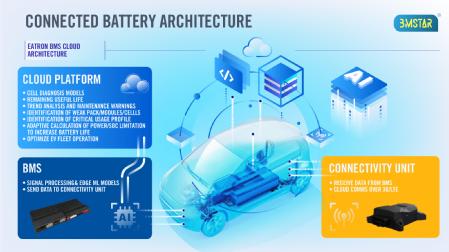
As part of project COBRA, Eatron Technologies is currently developing and integrating advanced battery diagnostics algorithms for its next generation of BMS and cloud-based battery analytics; it's expected that these will deliver significantly higher value both to battery manufacturers and integrators as well as electric vehicle Original Equipment Manufacturers (OEMs), UPS suppliers, and other providers of off-highway applications.
In terms of the usefulness of these technologies, the possibilities offered by project include: predicting the RUL of a lithium battery under real-world operating conditions, COBRA technology will work with both off-board fleet data analysis and on board vehicle data while integrating with the BMS and guide battery manufacturers and their cell suppliers.
All of this can be used to track and assess the real-life fleet performance of batteries during product validation and post-production phases. In wider terms, successful adoption of these new BMS features would ultimately also increase the value of the EVs and their uptake on UK roads`
As well as extending a batteries' first life by giving an accurate indication of a battery's remaining life, COBRA will also improve second-life applications by reducing the need for expensive testing, as well as increase the effective power of batteries by allowing the safe utilisation of a wider operating window.
Dr Dhammika Widanalage from WMG, University of Warwick comments:
“We are delighted to work with Eatron technologies on the COBRA project, and look forward to using our novel battery ageing technology to test out their algorithms in their battery management system.
“If their algorithms means consumers can get more out of their EV battery, then it’s possible more people may be inclined to buy one, therefore helping the UK pave the way to a cleaner greener zero-carbon future.”
After months of discussion with interested customers around the world, intelligent software provider Eatron Technologies found there exists a strong demand for the features that the COBRA project can offer in batteries for EVs. COBRA could contribute to the UK becoming a supplier of the most advanced Battery Management Systems (BMS) in the world, as well as contributing to an increased uptake of EVs which in turn will help nations around the globe to reach environmental targets over the coming decades.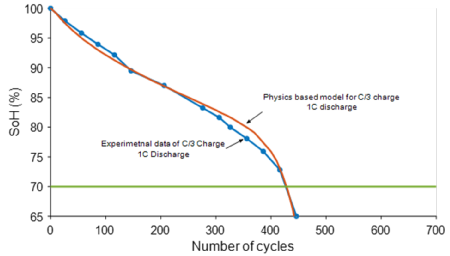
"This funding has brought the project forward by 12 months, and there is huge demand from potential customers," said Dr Umut Genc, Managing Director, Eatron Technologies. "With the funding, we've been able to immediately hire additional software engineers as well as tapping into cutting-edge battery research from the team at WMG. Ultimately, grant funding this project de-risks the activities required to achieve feasibility of this highly innovative approach to RUL estimation.
Tony Harper, Challenge Director for Faraday Battery Challenge at UK Research and Innovation, said:
“Since 2017 the Faraday Battery Challenge has been supporting the UK’s battery companies to produce batteries that are more cost effective, more efficient, charge faster and can easily be recycled. This new round of funding has enabled us to support companies, like Eatron Technologies, across the battery supply chain and build on the UK’s world class research and innovation.”
EVs on UK roads are set to see rapid growth, with 1.8 million expected to be sold in 2030, or 64% of total car sales, according to the Faraday Institution. The accompanying acceleration in battery manufacturing will drive a substantial increase in second-life applications, while the supply for stationary applications could excess 200 gigawatt-hours per year by 2030.
This rapid adoption of EVs around the world will increase global demand for BMSs over the coming years. Eatron Technologies is proud to be seen as a forerunner in BMS technology by the Faraday Institute and hopes that project COBRA plays an important role in the global fight for the environment by making EVs more practical for fleet operators and drivers around the world.
UK-based consortium established to develop prototype solid-state batteries
MOU signed between Johnson Matthey, Faraday Institution, Britishvolt, Oxford University, UK Battery Industrialisation Centre, Emerson & Renwick and University of Warwick
HARWELL, UK (19 August 2021) A consortium of seven UK-based organisations has signed a memorandum of understanding to combine ambitions to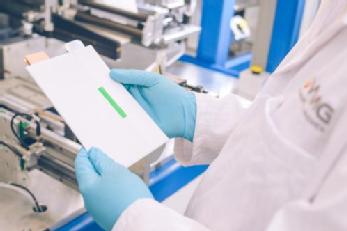 develop world-leading prototype solid-state battery technology, targeting automotive applications.
develop world-leading prototype solid-state battery technology, targeting automotive applications.
Solid-state batteries offer significant potential advantages over conventional lithium-ion batteries and could be transformational in meeting the UK’s net zero commitments through the electrification of transport. The successful outcome of the collaboration would be to harness and industrialise UK academic capability to produce cells using highly scalable manufacturing techniques that leapfrog the cost-effectiveness and performance achieved elsewhere.
The consortium comprises the following world-leading organisations in battery research, development and manufacturing:
· Faraday Institution – the UK’s independent institute for electrochemical energy storage research, which has led the consortium’s formation and will lead its development.
· Britishvolt – the UK-based Gigaplant developer, with a site in NE England.
· E+R (Emerson & Renwick) – a world leading designer of manufacturing equipment.
· Johnson Matthey – a global leader in sustainable technologies and the UK’s leading battery materials business.
· Oxford University – that leads the Faraday Institution’s solid-state battery project (SOLBAT) and provides the necessary scientific understanding to the consortium.
· UK Battery Industrialisation Centre – the pioneering battery manufacturing development facility to enable UK battery manufacturing scale-up and facilitate upskilling in the battery sector.
· WMG, University of Warwick – leaders in battery R&D and initial scale-up capability, as well as academic and apprenticeship skills development.
The preliminary design for a prototyping facility has been developed. Sources of funding are currently being sought.
Minister for Investment Lord Grimstone said: “Collaboration between industry, government and our world-leading academic institutions is putting the UK at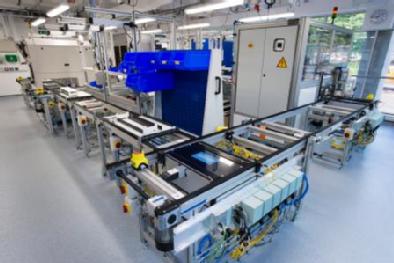 the forefront of global efforts to develop innovative automotive technologies, such as solid-state batteries.
the forefront of global efforts to develop innovative automotive technologies, such as solid-state batteries.
“It is the work of our internationally-renowned research and development base, like those brought together by this consortium, that will give us the tools needed to forge a strong and sustainable future for the automotive sector and increase our contribution to combatting climate change.”
“I am delighted to be able to announce the formation of this unique consortium for the advancement of solid-state battery prototyping that includes leading UK-based organisations at many stages in the value chain,” said Professor Pam Thomas, CEO of Faraday Institution. “Our leadership in this venture signals a move towards a role that the Faraday Institution will increasingly play as a trusted convener of significant partnerships between UK industry and academia as a route to commercialise breakthrough science emerging from our research programmes to maximise UK economic value.”
Solid-state batteries (SSBs) offer significant potential advantages over existing lithium-ion battery technologies, including the ability to hold more charge for a given volume (leading to increased electric vehicle (EV) range) and reduced costs of safety-management. Early deployment of SSBs is likely to be in consumer electronics, niche automotive applications and unmanned aerospace, before being used in broader EV markets. The Faraday Institution forecasts that, in 2030, SSBs are likely to take a 7% share of the global consumer electronics battery market and a 4% share of the EV battery market[1]. Global SSB revenues from sales to EV manufacturers are expected to reach $8 billion by 2030[2] and then grow rapidly to 2040 and 2050 when the market is expected to become extensive.
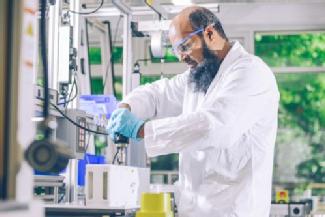 However, there are fundamental scientific challenges that need to be addressed before high power SSBs with commercially relevant performance can be realised. The Faraday Institution’s SOLBAT project has made considerable progress in addressing these challenges over the last three years.
However, there are fundamental scientific challenges that need to be addressed before high power SSBs with commercially relevant performance can be realised. The Faraday Institution’s SOLBAT project has made considerable progress in addressing these challenges over the last three years.
The construction of the one-of-a-kind facility being developed by the collaboration will enable SSB technology to emerge from UK university laboratories. It will allow larger cells to be produced using scalable manufacturing techniques that will be improved iteratively through deep investigation of the causes of problems that emerge during manufacture and testing of prototype batteries. This will leverage the collective knowledge of Faraday Institution SSB researchers and the industrial partners.
Christian Gunther, CEO, Battery Materials at Johnson Matthey comments, “The realisation of a prototype solid-state battery cell will be a great achievement for the UK battery industry, and this consortium will be a critical enabler for delivering this milestone. Delivering enhanced range and safety over traditional lithium-ion battery technologies will be a key driver for battery electric vehicle adoption, supporting the transition to a net zero future.”
Dr Allan Paterson, Chief Technology Officer, Britishvolt comments, “Solid-state is the holy grail of battery solutions. Solid-state batteries have the potential to increase energy density significantly over battery technology available today and could dramatically, and positively, change the world of electric vehicles. Britishvolt will be at the forefront of commercialising this step change over the coming years. This collaboration, which includes major global industrial leaders such as Johnson Matthey and academic leadership from University of Oxford, underscores another key objective in our technology roadmap – home grown intellectual property.”
Professor Peter Bruce, Principal Investigator of SOLBAT, comments: “It’s fantastic to see the culmination of combined UK academic strength in solid-state battery research come to fruition. I’m proud that the work of the Faraday Institution SOLBAT project, led by Oxford University, will make a significant contribution to the UK’s green energy revolution.”
Ian Whiting, Commercial Director at UKBIC added: “Our newly opened national battery manufacturing scale up facility is already contracted to scale new cells and battery packs by companies basing their manufacturing centres in the UK. It’s a really exciting time for this fast-growing industry. We’re scaling technologies that will be the core products of the UK’s emergent Gigafactories. But we need to think even further ahead and solid-state battery technology is going to be a big part of that. This collaboration is what is needed to give the UK the edge it needs in creating a centre of excellence for solid-state batteries and we’re excited to be part of it. The bringing together of academic and industrial know how in this space is key to unlocking Britain’s electrified potential.”
David Greenwood, Professor of Advanced Propulsion Systems, and CEO of WMG High Value Manufacturing Catapult comments: “Early forms of solid-state battery are already around us, but we have yet to see solutions which are both mass-manufacturable and meet the performance and cost targets for future transport applications. There remains huge opportunity for innovation in this space, and this initiative will provide the route for the UK to fast-track candidate technologies to industrialisation.”
Andrew C Jack, Sales Director, E&R Group comments, “E&R Group are delighted to be contributing our world renowned engineering expertise working in partnership Faraday and the wider consortium on this exciting development for next generation battery production for the UK.
For more information on the Faraday Institution, visit www.faraday.ac.uk and follow @FaradayInst on twitter.
Highly efficient grid-scale electricity storage at fifth of cost – researchers modify hybrid flow battery electrodes with nanomaterials
Researchers in WMG at the University of Warwick, in collaboration with Imperial College London, have found a way to enhance hybrid flow batteries and their commercial use. The new approach can store electricity in these batteries for very long durations for about a fifth the price of current technologies, with minimal location restraints and zero emissions.
The researchers enhanced three hybrid flow cells using nitrogen doped graphene (exposed to nitrogen plasma) in a binder-free electrophoresis technique 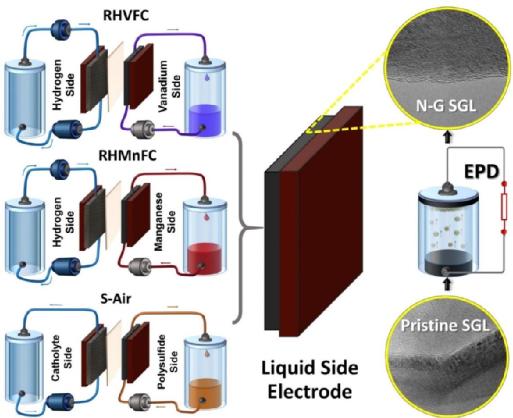 (EPD)
(EPD)
Wind and solar power are increasingly popular sources for renewable energy. Unfortunately, intermittency issues keep them from connecting widely to the National grid. One potential solution to this problem involves in the deployment of long-duration battery technology, such as the redox flow battery. Despite its great promise the current costs of this system are a key determining factor to real-world adoption. An affordable grid battery should cost £75/kWh, according to the US Department of Energy. Lithium-ion batteries, which lead the charge for grid storage, cost about £130/kWh.
Now WMG researchers have found a way of enhancing hybrid flow batteries or regenerative fuel cell (RFC) technology that could store electricity for very long durations for about one-fifth the cost of current storage technologies, with flexibility in siting and with minimal environmental impact. The technology combines carbon-based electrodes with economically sourced electrolytes, (manganese or sulphur, which are abundant chemicals in the planet) by means of a simple and yet highly effective electrophoretic deposition of nano-carbon additives (nitrogen-doped graphene) that enhance the electrode durability and performance significantly in highly acidic or alkaline environments.
The researchers have published their findings in a paper entitled, ‘Hybrid Redox Flow Cells with Enhanced Electrochemical Performance via Binderless and Electrophoretically Deposited Nitrogen-Doped Graphene on Carbon Paper Electrodes’ in the December 2020 edition of the journal ACS Applied Materials & Interfaces.
Dr Barun Chakrabarti, a Research Fellow in WMG at the University of Warwick and one of the lead authors on the paper said:
“This EPD technique is not only simple but also improves the efficiencies of three different economical hybrid flow batteries thereby increasing their potential for widespread commercial adoption for grid-scale energy storage.”
The hybrid flow battery’s total chemical cost is about 1/30th the cost of competing batteries, such as lithium-ion systems. Scaled-up technologies may be used to store electricity from wind or solar power, for multiple days to entire seasons, for about £15 to £20 per kilowatt hour. These batteries are also extremely useful for grid-scale load levelling applications as their design is very flexible due to their unique feature of sizing their power independently of their energy.
The energy density of a hybrid flow battery, especially the polysulphide/air system (S-Air), is 500 times higher than pumped hydroelectric storage. It is also so much more compact and can be placed near any renewable generation.
ENDS
22 JANUARY 2021
Notes for Editors
High-res image available at:
https://warwick.ac.uk/services/communications/medialibrary/images/january_2021/barun_release_image.jpg
Caption: A Binder-Free Horizontal Electrophoretic Deposition (EPD) Process Is Used to Activate Commercial Carbon Paper Electrodes Using Nitrogen-Doped Graphene
Credit: WMG, University of Warwick
Full list of researchers: Co-investigators with Dr Chakrabarti at the WMG Energy Innovation Centre at the University of Warwick are: Evangelos Kalamaras (Project Engineer, Battery Testing) and Professor Jon Low (Associate Professor, Electrochemical Engineering). Co-investigators from Imperial include Anthony Kucernak and Nigel Brandon.
The full paper with all author details can be found here: Hybrid Redox Flow Cells with Enhanced Electrochemical Performance via Binderless and Electrophoretically Deposited Nitrogen-Doped Graphene on Carbon Paper Electrodes
Background history to this area of research
Development of the EPD technology began in 2013, when Professor Low joined WMG as an Assistant Professor and researched industrial Lithium-ion battery manufacturing processes. EPD involves the migration of electrically charged particles through a fluid that is under the influence of an electric field generated by applying the right potential.
Although EPD is an industrially adopted process such as for depositing industrial coatings onto conductive substrates, its mass-scale adoption for energy storage applications has only recently seen some success. Supported by EPSRC’s First Grant (EP/P026818/1, https://gtr.ukri.org/projects?ref=EP%2FP026818%2F1) and Industrial Strategy Challenge Fund on battery and supercapacitor manufacturing (EP/R023034/1, https://gtr.ukri.org/projects?ref=EP%2FR023034%2F1), Low’s research team have developed EPD for preparing lithium-ion battery electrodes that meet industrial standards for thickness and mass loadings and published their finding in ‘Batteries and Supercaps’ (https://chemistry-europe.onlinelibrary.wiley.com/doi/full/10.1002/batt.201900017). They have also produced carbon electrodes with nanomaterials for improving the practical performance of vanadium-based flow batteries using deep eutectic solvent electrolytes, and published their finding in ‘Batteries’ (https://www.mdpi.com/2313-0105/6/3/38).
FOR FURTHER INFORMATION PLEASE CONTACT:
Alice Scott
Media Relations Manager – Science
University of Warwick
Tel: +44 (0) 7920 531 221
E-mail: alice.j.scott@warwick.ac.uk
Battery ageing model developed by WMG to support all-electric vehicles
- The issue of how long a battery pack will remain in useful operation, to guarantee a warranty for an electric vehicle battery, is a challenge faced by most car manufacturers, as they haven’t been around long enough for them to know their full lifetime
- Working as part of an APC6 funded project, WMG at the University of Warwick developed a battery model capable of forecasting the battery health for realistic usage cases
- Researchers at WMG experimentally tested the batteries for several usage cases and the model predicted the evolution of battery health with 98% accuracy
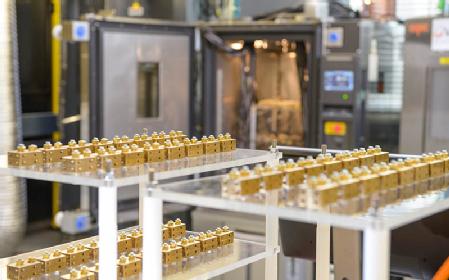
Extensive research, carried out by researchers from WMG, University of Warwick included characterisation, performance, safety and degradation testing of an EV battery, with degradation being the key focus to understand the impact on battery pack warranty.
To predict the degradation of the battery capacity researchers had to build a complex battery model, incorporating the key physics that causes batteries to age. The model was capable to predict scenarios under which a battery health will gradually fade and fulfil the warranty requirements and scenarios where the battery health will suddenly decrease after a certain usage duration.
Knowing when a battery’s health, can suddenly decrease, known as the ‘knee-point’ effect is a hotly studied problem among lithium-ion battery researchers. Researchers found that, for the particular battery investigated, by avoiding deep discharges and reducing the number of fast-charging a week, enabled the battery to perform and last the expected lifetime of the battery pack.
The aged cells were subsequently disassembled and examined for failure evidences. Fully discharging the battery at different rates demonstrated a thin film to deposit on the electrode and deform the electrode causing the active material in the batteries to delaminate. These effects can bring about a sudden reduction in the battery health.
Dr Dhammika Widanalage, from WMG, University of Warwick comments:
“We worked with the project partners to understand the needs of the battery ageing model and the usage scenarios. Using the data from our laboratories, we were then able to calibrate our model and also predict the voltage response and capacity fade of the battery under new usage cases with a very high accuracy of around 98%.”
The WMG Battery School is back, and it’s virtual!
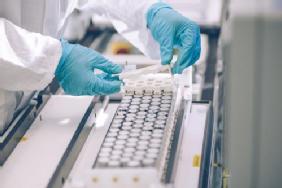 The WMG Battery School, supported by the APC and HVM Catapult, will take place, from 14th to 18th September, for key industry personnel.
The WMG Battery School, supported by the APC and HVM Catapult, will take place, from 14th to 18th September, for key industry personnel.
WMG battery experts will facilitate a mix of live lectures and pre-recorded practical hands-on-sessions, virtually, over the five days.
The lectures will cover manufacturing Lithium batteries, module and pack design, electrical testing and ageing, battery management systems, safety and abuse testing, forensic characterisation and battery end of life.
Meanwhile the practical, pre-recorded in the Energy Innovation Centre, lab sessions, will focus on microscopy; electrode mixing and coating; pouch and cylindrical cell fabrication; cell and module testing; and forensics.
Find the full lecture and demo programme and register your interest here or by email: WMGShortCourses@warwick.ac.uk

